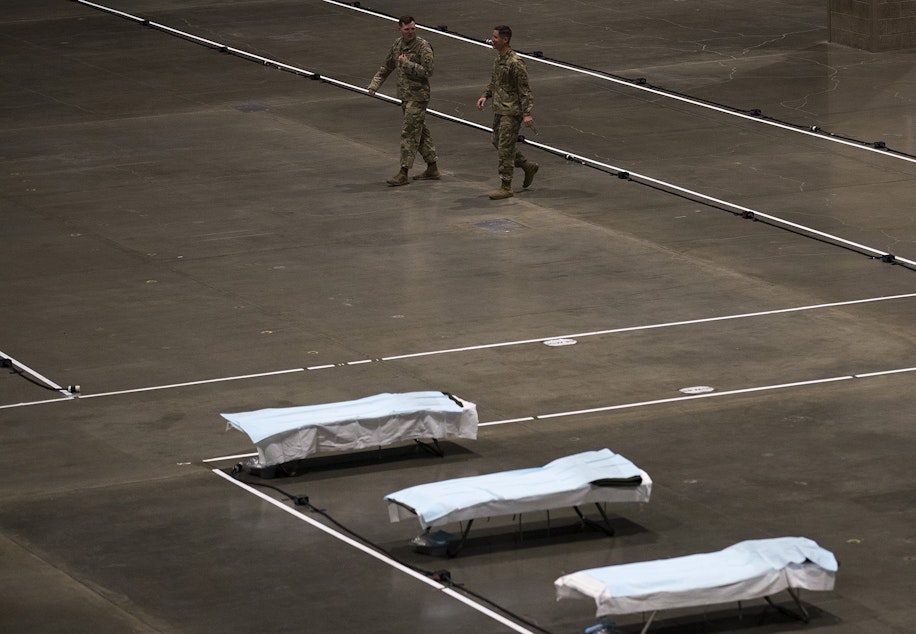Model suggesting Washington's hospitals could withstand a COVID-19 surge may be too optimistic, experts say

A new model suggesting that Washington state's hospitals could weather the worst of the coronavirus crisis has received widespread attention.
But experts caution that the model, created by the University of Washington's Institute of Health Metrics and Evaluation, only looks at the best-case scenario: what could happen if social distancing measures successfully suppress the transmission of the coronavirus.
Recent reports indicate that Washington state’s social distancing measures are slowing, but not stopping, the spread of the virus: At last count, each person infected with the coronavirus here was still infecting, on average, more than one other person.
That means “we can’t simply plan for the range of conditions predicted by the model and think, ‘Okay, now we are sure to be okay,’” said Carl Bergstrom, a theoretical biologist at the University of Washington. He was not involved in building the model.
“It’s not clear yet that we are going to be successful in suppressing the pandemic,” he added, referencing that most recent look at how the virus is spreading across the state.
The model uses what happened in Wuhan to predict what might happen elsewhere. There, officials completely locked down the city to suppress the spread of the virus.
Washington state hasn’t taken the same drastic measures.
“This model doesn’t try to look at what happens if the pandemic spirals out of control — if the things we’re doing right now aren’t sufficient,” Bergstrom said.
To try to get to — and stay on — the trajectory traced by the Institute of Health Metrics and Evaluation's model, people in Washington state — and across the country — would have to keep up, and in some cases increase, social distancing.




